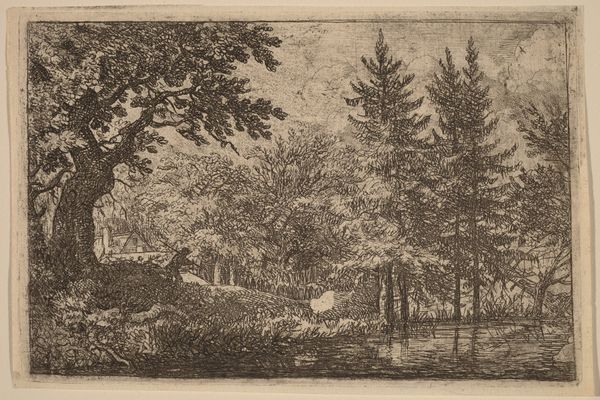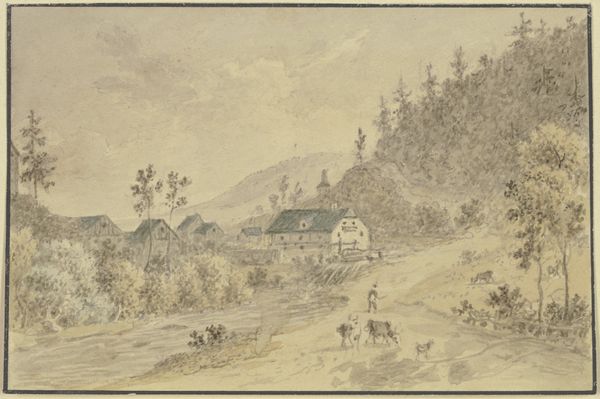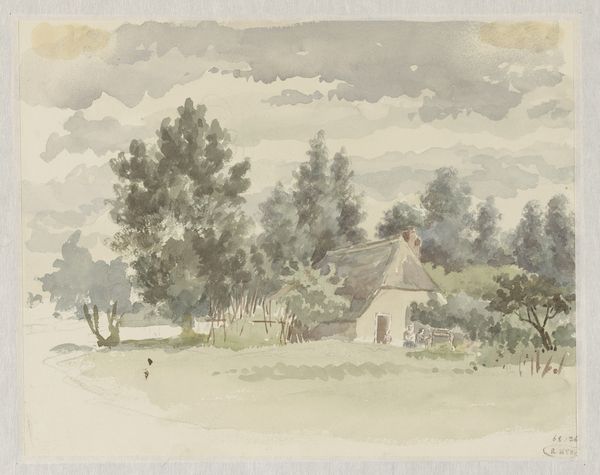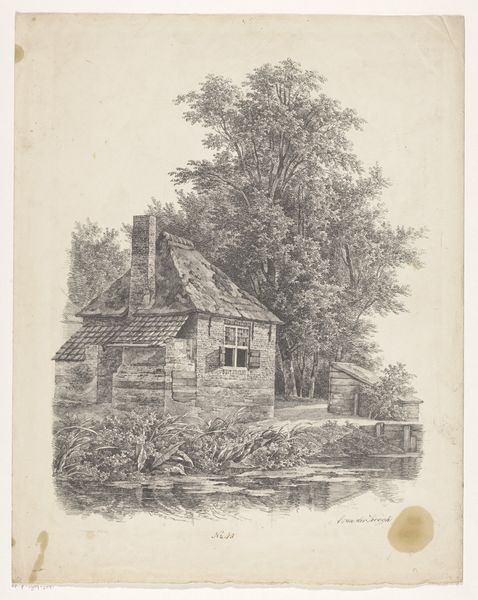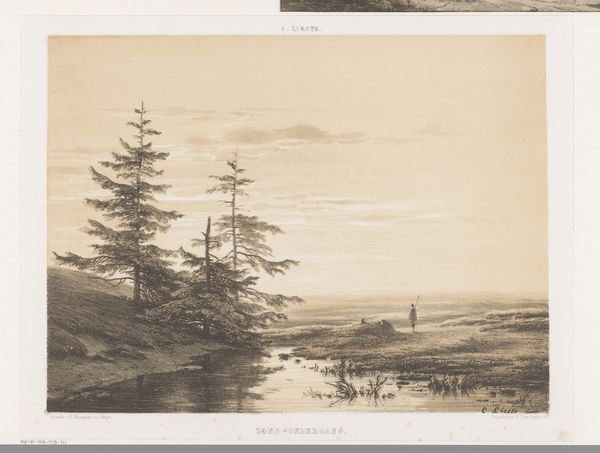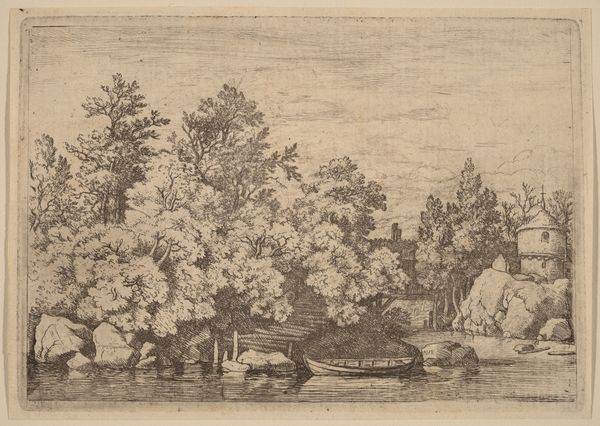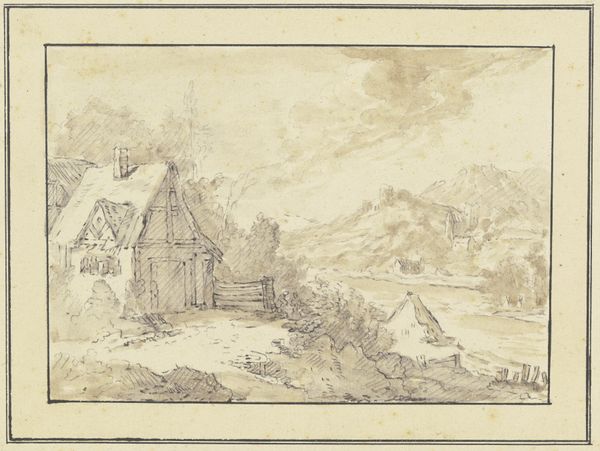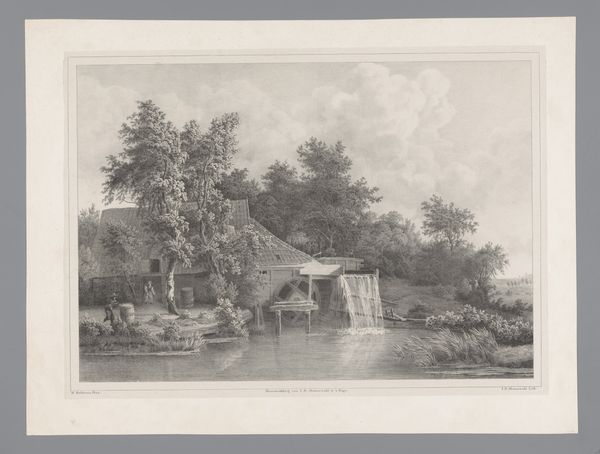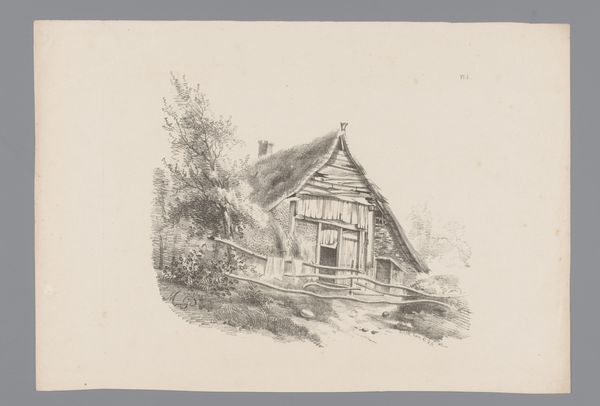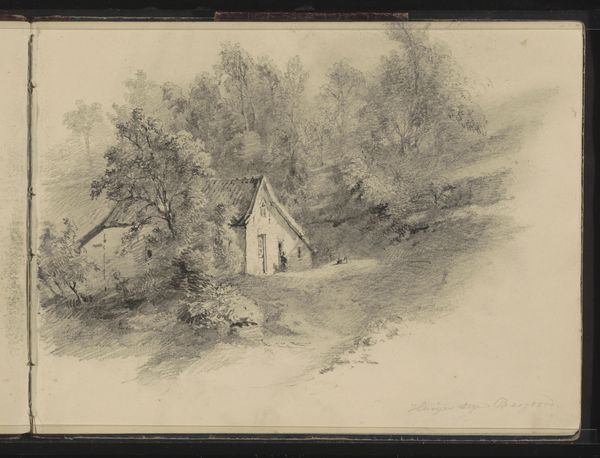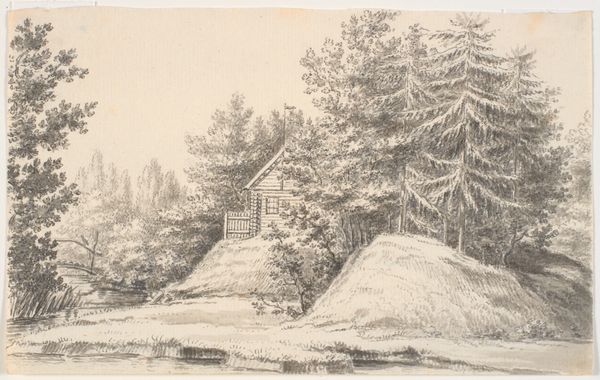
drawing, coloured-pencil, paper, ink, architecture
#
drawing
#
coloured-pencil
#
16_19th-century
#
landscape
#
paper
#
ink
#
coloured pencil
#
romanticism
#
watercolor
#
architecture
Copyright: Public Domain
Editor: Here we have Carl Roux’s, *Landscape with Half-Timbered House and Cascade*. It looks like it was made with colored pencil, ink, and possibly watercolor on paper. There is such a feeling of serenity in this pastoral scene. What do you see in this piece? Curator: It’s a seemingly peaceful landscape, yes, but I'm interested in deconstructing that idyllic surface. The architecture feels deliberately placed, almost imposed upon the landscape. We should be questioning, "Who benefits from this construction?" and "What is the impact of such development on the environment and local communities?". Do you see the way the cascading water seems almost… harnessed? Editor: Hmm, I do see how the water leads directly to the mill. I hadn't really considered the impact of the mill on the ecosystem, or the economic structure. Curator: Exactly! Think about the Romantic movement, its idealization of nature, and its simultaneous implication in industrial and colonial projects. We should examine who is allowed to participate in this constructed paradise and who is excluded or exploited. This landscape isn't just about aesthetic beauty; it's deeply entwined with power structures and resource control. Editor: So, it's like the artwork invites us to reflect on the connection between visual pleasure, ecological impact, and social equity? Curator: Precisely. By recognizing the complex interplay between artistic expression and societal impact, we engage with art on a deeper, more meaningful level. Editor: This reframes the work in a new light, emphasizing critical awareness, and responsibility in viewing art. I never would have seen it that way on my own. Curator: Art isn’t created in a vacuum. Everything is interconnected. That’s what makes art history so incredibly rich.
Comments
No comments
Be the first to comment and join the conversation on the ultimate creative platform.
